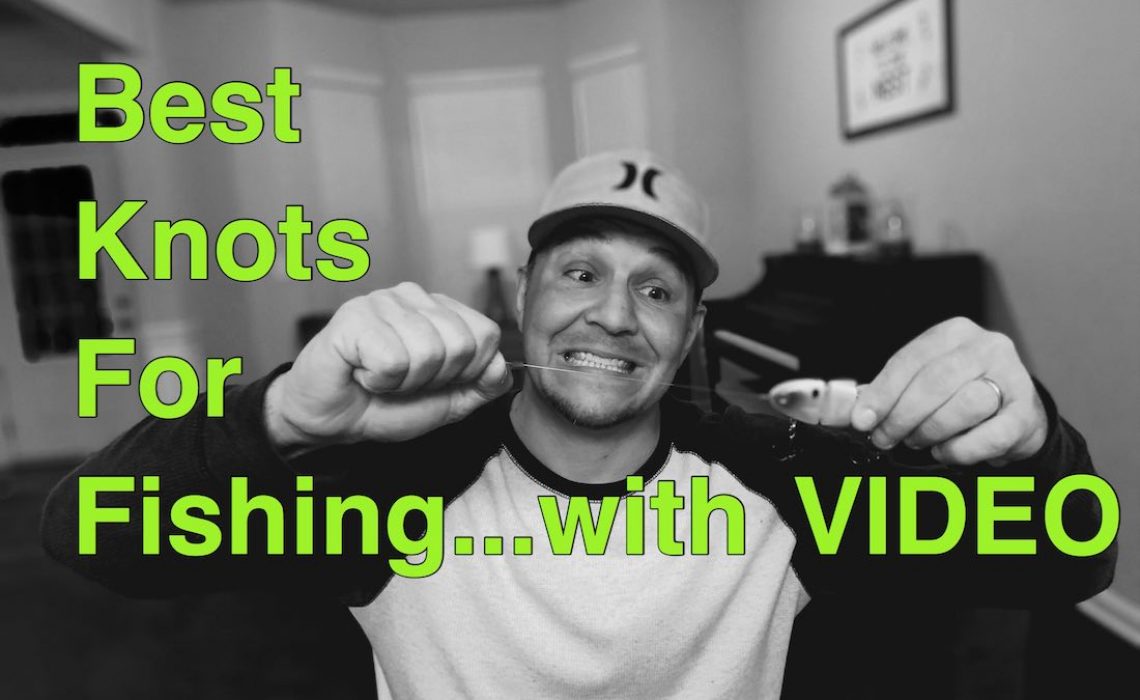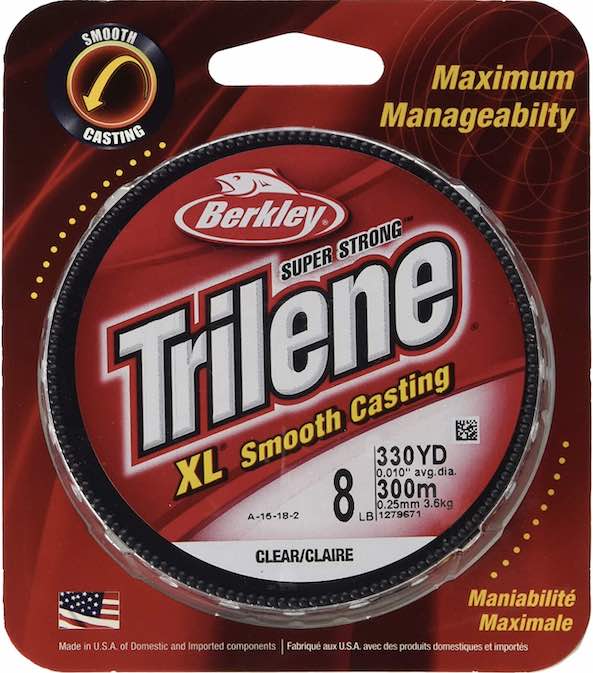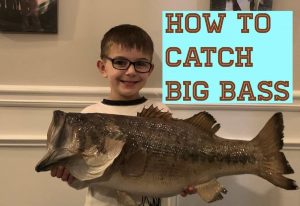Fishing knots are crucial to the success of your bass fishing. You can better your chances if you tie the correct fishing knot for the bait or presentation you are using. The knots can help or hurt the action of your bait. Some knots are not meant to be yanked on when you set the hook on a big jig or flipping style bait.
Certain fishing knots are not good for different types of line. Some knots are designed to point your hook out when you set the hook. Do not worry I am going to simplify all this and you will be all set for your next fishing trip. Here are some of the most important Strong bass fishing knots that every bass fisherman should know.
So one of the easiest, versatile and strongest knots is the
Palomar knot. You can use this knot with braid, fluorocarbon and monofilament. I tie this knot with all my moving baits.
Fluorocarbon Examples:
Jerk baits-fluorocarbon
Spinner baits-fluorocarbon (Monofilament is also fine)
Chatter Baits-fluorocarbon
Swim baits-fluorocarbon
Crank Baits-fluorocarbon
Swim Jig-fluorocarbon
Flukes-fluorocarbon
Vertical fishing like a spoon or drop shot-fluorocarbon
Basically anything you power fish with that you want to run underneath the water.
Monofilament Examples:
Poppers-monofilament
Walking baits-monofilament
Whopper ploppers-monofilament
Buzz Baits-monofilament
Wake Baits-monofilament
One more variation where we can use the Palomar knot is with a drop shot rig which I will explain. We just have to have an extra long tag end for the weight and feed it back through the eye of the hook.
It is important to remember that line choice for your baits is crucial. You can get away with straight braid tied right to the lure if the water is dirty or you are fishing around a ton of vegetation. You will have to make that call on your own. For instance, when I fish in Lake Okeechobee I always fish braided line and no leader of any kind typically. In Lake St. Clair I will always have a leader on.
Line choice can also mess up the action of your lure. If you tie on a topwater bait like a spook to a fluorocarbon leader it will mess up the action of the bait. Fluorocarbon is meant to sink as opposed to monofilament or braid which floats. Line choice for your fishing lures is very important.
Double Uni Knot – Connecting Braid to a Leader
I love using braided fishing line. Two of my favorites are Suffix because it is very limp but it is a little bit more expensive. Spider wire is a more cost-effective choice and works just fine as well although it is not quite as limp as Suffix.
When connecting braided fishing line to a leader like a Monofilament or a Fluorocarbon I use a double uni knot. As you can see in the video down below it is pretty simple. All knots take practice to learn. Do not try and figure it out on the boat with the wind blowing and waves crashing into you. Practice at home and get proficient and you will waste less time when fishing.
Also, before I forget, these are my top choices for Fluorocarbon and Monofilament. Both of which are the brand of Trilene.
The pros of using a double uni knot.
You can use braid as your base and not have to change it for like two years which will save you some money. Braid as a base has little to not stretch at all. This means you will have a lot better feel with your bait and get better and stronger hook sets.
The cons
Whenever you break off you will eventually (based on how long your leader is) have to tie two knots to get back started fishing. Also you will not be able to throw a double uni knot through any of your rods that have micro guides
Pro Tip: By the way guys and gals if you have ever used braided fishing line you know that it can be very hard to cut. Clippers or regular scissors will not work well at all. I always get Braided line scissors because this stuff cuts through the braided line very clean.
It is important to make sure that your line is pulled tight when cutting so you get a clean cut. Also make sure to have a couple pairs of scissors because you will misplace them.
The Fluorocarbon Knot
This is by far one of my favorite knots. A lot of people do not even know about it. If you are fishing anything that bumps or drags the bottom then this is the knot for you. This is a thick and STRONG knot that won’t break when you set the hook hard. I love the palomar knot but since it is a smaller knot it will sometimes break when snatching on some big bass. Once you tie this knot you will see how it is bulky and will last up against those bigger bass.
When to use:
Shaky head worm
Jig
Ned rig
Tube
Texas rigged worm
Carolina rigged worm
Anything that you drag on the bottom.
When Not to Use:
Do not use it when flippin and pitching with heavy weights
Do not use it with anything that you swim because it messes with the action of the bait (swim jig or fish head spin are great examples of when not to use).
This knot is a little more complex. Here is a video explaining how to tie this knot.
I can throw this knot and I know when I go to set the hook that this thing is going to hold up. Also, the bass with their sandpaper like teeth will rub against your knot. With this knot being so bulky it will last a lot longer. You can also tie this with just a very little bit of line once you get the hang of it. Again, the key here is to practice these knots so you get more proficient with them.
Pro tip: If you have vision problems it is important to take some glasses with you on the water so you are able to see better when tying these fishing knots.
The Snell Knot
This knot is absolutely vital to a heavy pitching style bait. If you are fishing with a big 1 oz weight and trying to punch through matted grass or pads this is the knot you will use.
This is a knot you are going to tie with braided fishing line. The great thing about this knot is that when you set the hook it is going to point the hook out and better your chances of hooking the bass. Down below Jacob Wheeler does a great job of explaining this knot
Notice how he said he was using 65 lb braided line. This is going to be what you need to get those fish out of that heavy cover. That big weight hitting a knot over and over can weaken your knot. However, with the snell knot being tied around the shank of the hook that problem does not exist. Watch how Mike Iaconelli demonstrates that when the weight hits the hook it flips the hook out to help land more fish.
You can use fluorocarbon with the snell knot as well and it will have the same effect. You just would use this when flipping lighter cover and more clear water. Maybe using less weight would be another factor where you would use Fluorocarbon as well.
Pro Tip: When using flipping style techniques make sure to have some bobber stoppers like the ones pictured here above your weight.
So you will put bobber stop on first and then your weight followed by your hook. This will stop your weight from sliding up and down the line too much. It will keep a tighter profile and help you become more accurate and punch through that heavy cover.
IN CONCLUSION
There are tons and tons of different types of knots you can have in your arsenal. However, sometimes less is more. If you nail down these four knots that I mentioned above you are ready for any and all situations that you will across on the water.
Focus on the Palomar (great for teaching kids), Double Uni Knot, Fluorocarbon Knot, and the Snell Knot and you will be just fine next time you are out on the water. These knots used in the right situations have absolutely helped me catch more fish.
Remember, as I explained above fishing line choice is absolutely crucial. It can and will be the difference between catching more fish. It will affect the action of your bait. If you have the right line for the situation you will have a lot better feel and contact with your lure of choice. Which means you will reach your ultimate goal of catching more bass. I hope this helps someone and I also want to know if you think I forgot any knots in the comments below.
Remember to Like us on Facebook, Follow us on Instagram and subscribe to our YouTube channel. Also, be sure and subscribe to our newsletter if you want some more of these awesome fishing tips. Thanks for Reading!!








